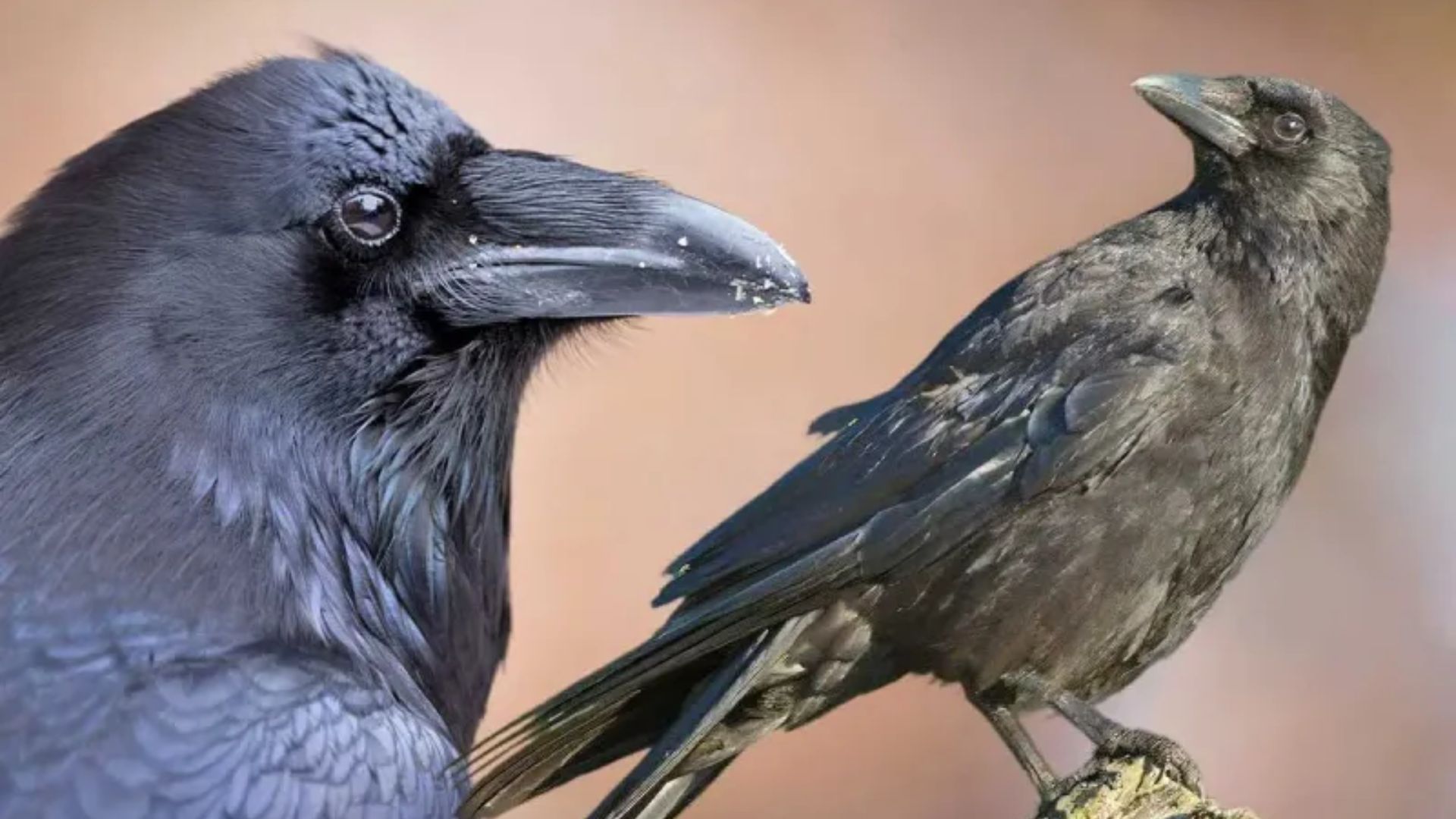Crows and ravens are often mistaken for one another due to their similar black plumage and intelligent behavior.
However, there are distinct differences that bird enthusiasts and casual observers alike can note to tell these two birds apart.
We’ll explore 11 ways you can distinguish between crows and ravens, focusing on physical characteristics, behavior, and vocal patterns.
Whether you’re a novice birdwatcher or a seasoned ornithologist, these tips will help you become more adept at identifying these fascinating birds.
1. Size Difference
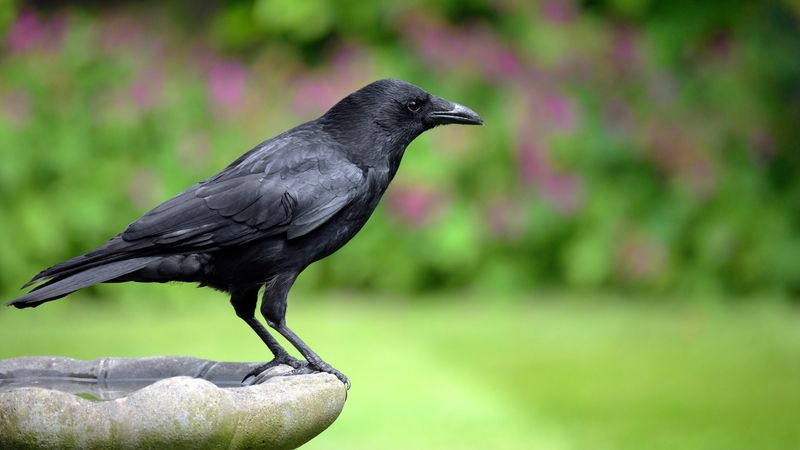
The first noticeable difference between crows and ravens is their size. Ravens are generally larger than crows, with ravens reaching up to 27 inches in length and having a wingspan of about 46 inches.
Crows, on the other hand, are smaller, measuring about 17 inches in length with a wingspan of around 39 inches.
This difference in size can be observed when both birds are seen together, often making it one of the easiest ways to distinguish them if they are in proximity.
If you spot a lone bird, comparing its size to common objects like signs or branches can help you gauge whether it’s more likely a crow or a raven. Observing them in an area where both species are present can make this size difference more apparent.
2. Tail Shape
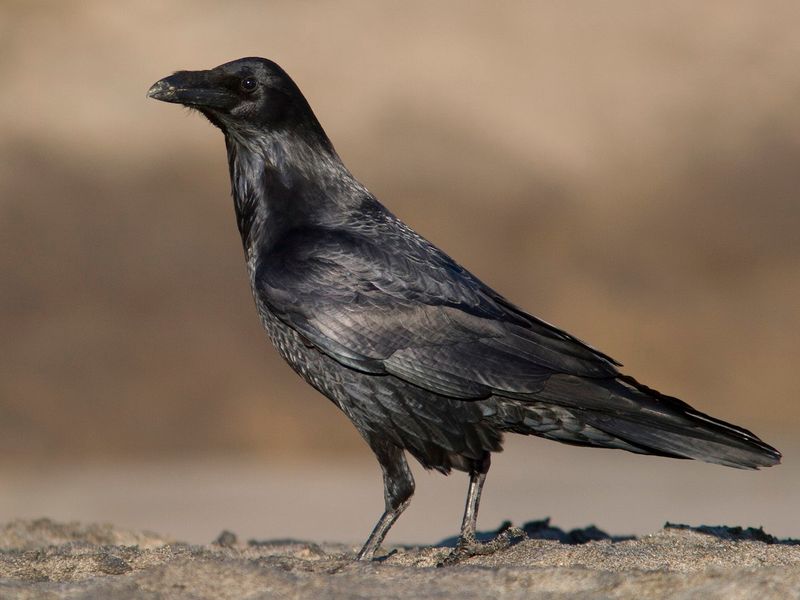
Another distinctive feature is the tail shape. When in flight, a crow’s tail shows a fan-like shape, as all feathers are roughly the same length.
Ravens, however, have a more wedge-shaped tail, with the middle feathers being longer than the outer ones. This difference is especially noticeable when viewing these birds in flight against the sky. Next time you see a black bird soaring above, take a moment to notice the shape of its tail.
This small detail can be a quick identifier to separate the two birds. It’s a useful tip particularly on a breezy day when birds are gliding and showing off their tail shapes.
3. Beak Shape
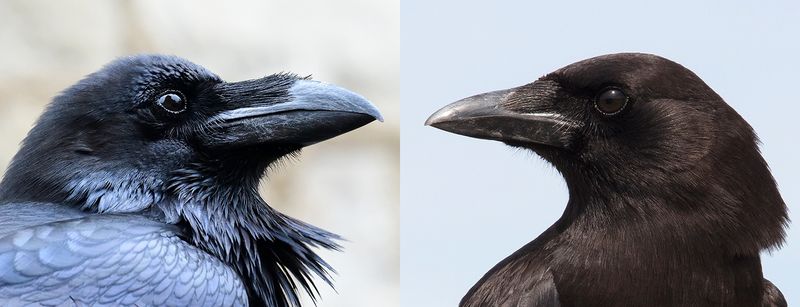
The beak is another characteristic that sets crows and ravens apart. Ravens have a noticeably thicker and more curved beak compared to the thinner and straighter beak of crows.
This feature not only contributes to their different feeding habits but also assists in identifying them from afar. If you have a pair of binoculars handy, observing their beak shape can be an excellent way to tell them apart, particularly if they are perched or feeding.
This beak difference is functional too, as ravens often use their robust beaks to tear into carrion, while crows tend to have a more varied diet that doesn’t require such strength.
4. Vocalizations
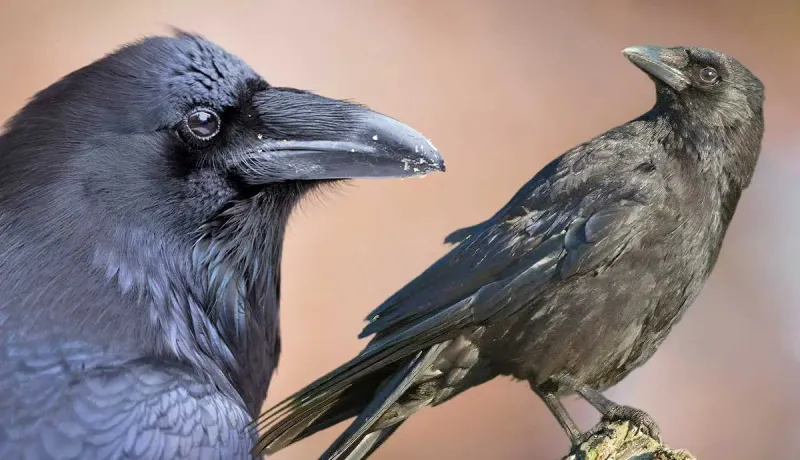
Crows and ravens have distinctive vocal patterns. Crows are known for their cawing sound, which is sharp and repetitive.
Ravens, however, produce a deeper, more resonant croaking sound. These vocal differences are not just random; they serve specific purposes in communication and territory establishment.
While walking in a wooded area or even in urban settings, listening carefully to the calls can help identify which bird you’re hearing.
Over time, you’ll find that ravens have a more varied vocal range, often mimicking sounds from their environment, showcasing their intelligence and adaptability. In contrast, crows tend to stick to their signature caw, making them easier to identify through their calls.
5. Feather Texture
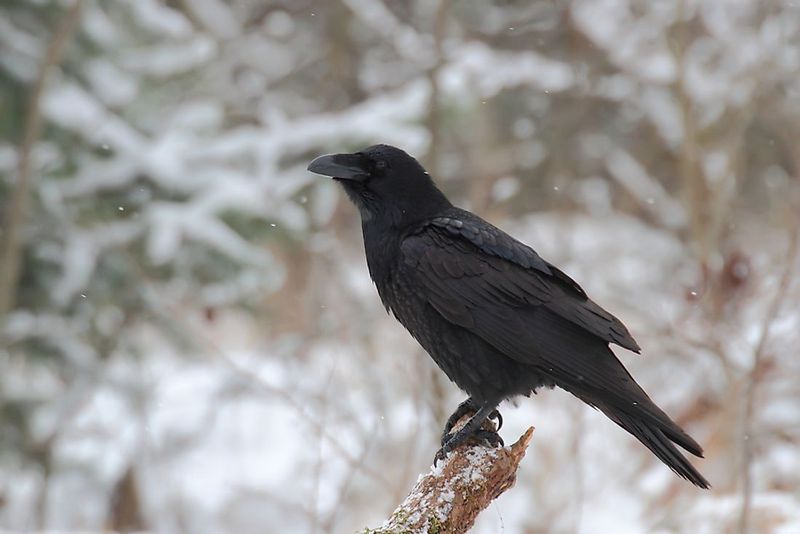
Feather texture is a subtle yet telling difference between crows and ravens. Ravens boast a glossy sheen to their feathers, especially noticeable when sunlight hits them, giving them a somewhat iridescent look.
Crows, conversely, have a more matte finish to their feathers, which can sometimes appear slightly dusty or less vibrant. Observing this can be more pronounced in direct sunlight or when both birds are in close proximity.
This difference in feather texture can be a delightful detail to note for those interested in avian characteristics and adds another layer of appreciation for these remarkable birds.
6. Social Behavior
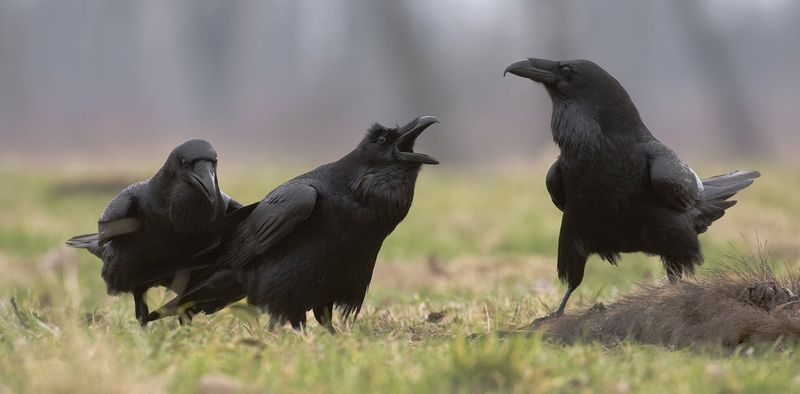
Crows are known for their social nature, often found in large groups called murders. They engage in play and complex social interactions, showcasing their intelligence and cohesive group dynamics.
Ravens, in contrast, are more solitary or found in pairs. This difference in social behavior can be observed in various environments, from urban parks to rural landscapes.
If you spot a large group of black birds engaging in playful antics, they are likely crows. On the other hand, a lone bird or a pair exhibiting more subdued behavior could indicate a raven.
This social distinction is not just behavioral but also influences their survival strategies and adaptation to different habitats.
7. Habitat Preference
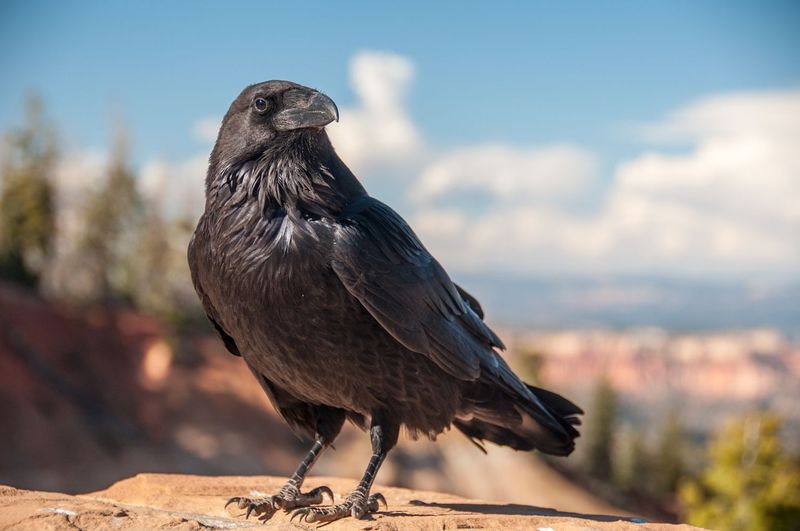
While both crows and ravens are adaptable, they have different habitat preferences. Crows are more often seen in urban areas, comfortable around human activity and bustling city life.
They are known to thrive in environments where food is readily available from human waste. Ravens prefer more secluded, natural environments such as forests, mountains, and rural areas.
This difference in habitat preference can help bird watchers predict which bird they are likely to encounter based on location. Observing these birds in their preferred environments also provides insight into their different lifestyles and survival strategies, making bird watching an enriching experience.
8. Wing Flapping Pattern
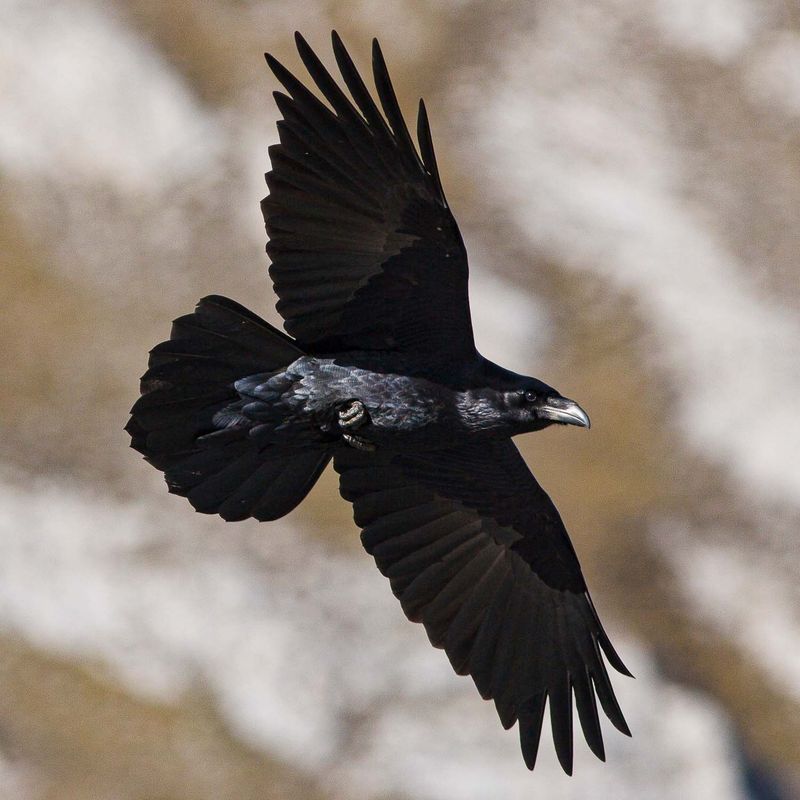
The way crows and ravens fly can also help in distinguishing them. Crows have a more consistent flapping pattern and tend to flap their wings more frequently. Ravens, on the other hand, are known for their ability to glide elegantly with less frequent flapping.
This difference in flight pattern is particularly useful when observing them from a distance, as it offers another layer of differentiation. Watching their flight dynamics can be quite mesmerizing, revealing yet another facet of their unique adaptations.
Next time you see a black bird in flight, pay attention to its wing flapping, it might just tell you whether you’re seeing a crow or a raven.
9. Nesting Habits
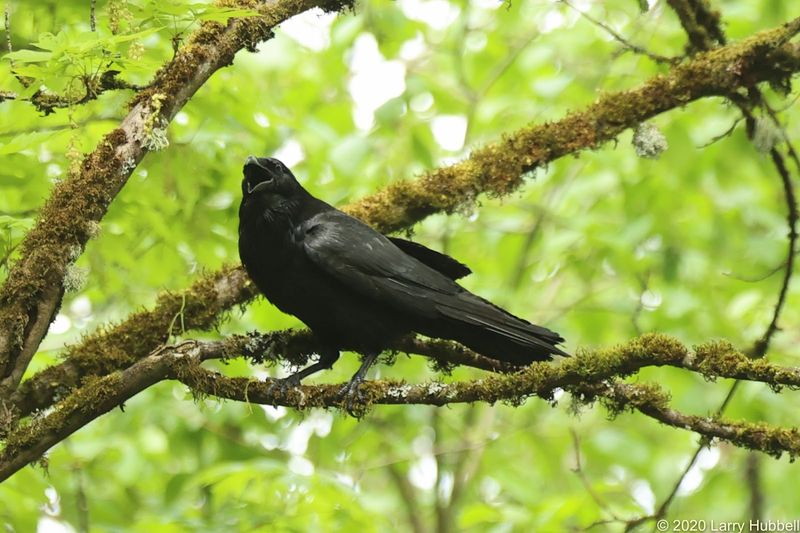
Nesting habits provide another clue in telling these birds apart. Crows usually build their nests high up in trees, using sticks and sometimes incorporating human-made materials. Ravens, in contrast, are more likely to build their nests on cliffs or ledges, using larger branches and bones.
The choice of nesting site reflects their different approaches to raising young and coping with environmental challenges. Birdwatchers can observe these nests during breeding season to gain insights into these birds’ lives.
Understanding their nesting preferences not only aids in identification but also enriches the appreciation of their adaptive strategies in varying landscapes.
10. Facial Features
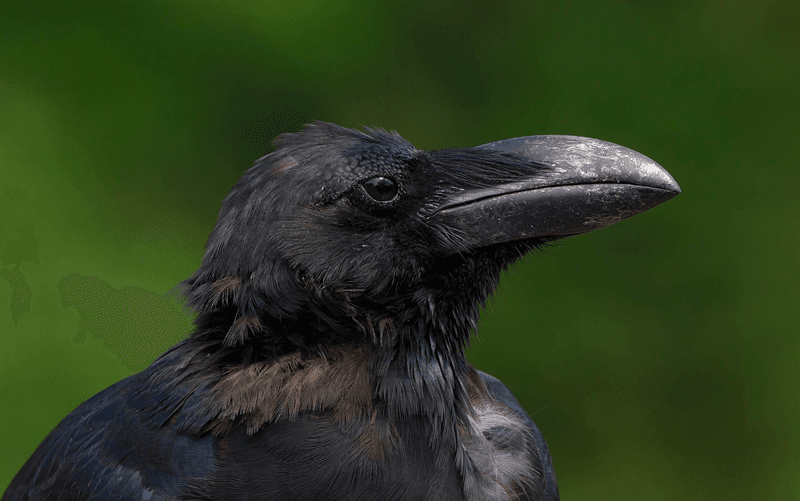
Facial features can serve as another point of differentiation. Ravens have distinct shaggy throat feathers, often referred to as hackles, which give them a somewhat rougher appearance.
Crows, however, have smoother throats and necks without the prominent feather tuft. This detail can be particularly noticeable when the birds are at rest or during vocal displays.
Observing these features requires a keen eye, but can be a rewarding experience for those interested in the nuances of bird identification. It’s another testament to the diverse adaptations and characteristics that these birds exhibit, highlighting their unique evolutionary paths.
11. Intelligence And Tool Use
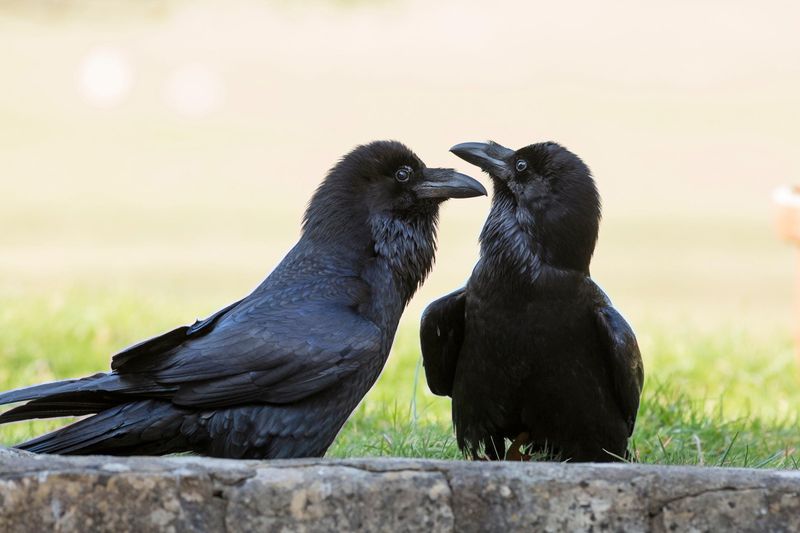
Both crows and ravens are incredibly intelligent, but they exhibit their smarts in slightly different ways. Crows are known for their problem-solving abilities and have been observed using tools, such as sticks, to extract insects from hard-to-reach places.
Ravens, while also adept problem solvers, tend to demonstrate their intelligence through play and social interaction, often engaging with objects in their environment for entertainment.
These differences in intelligence display can be seen in various settings, from urban parks to remote forests. Observing these behaviors offers a fascinating glimpse into the cognitive abilities of these birds, making them not only captivating to watch but also to study.

